First 'Homo' species left Africa with ape-like brains
Early humans in Eurasia had "primitive" brains.
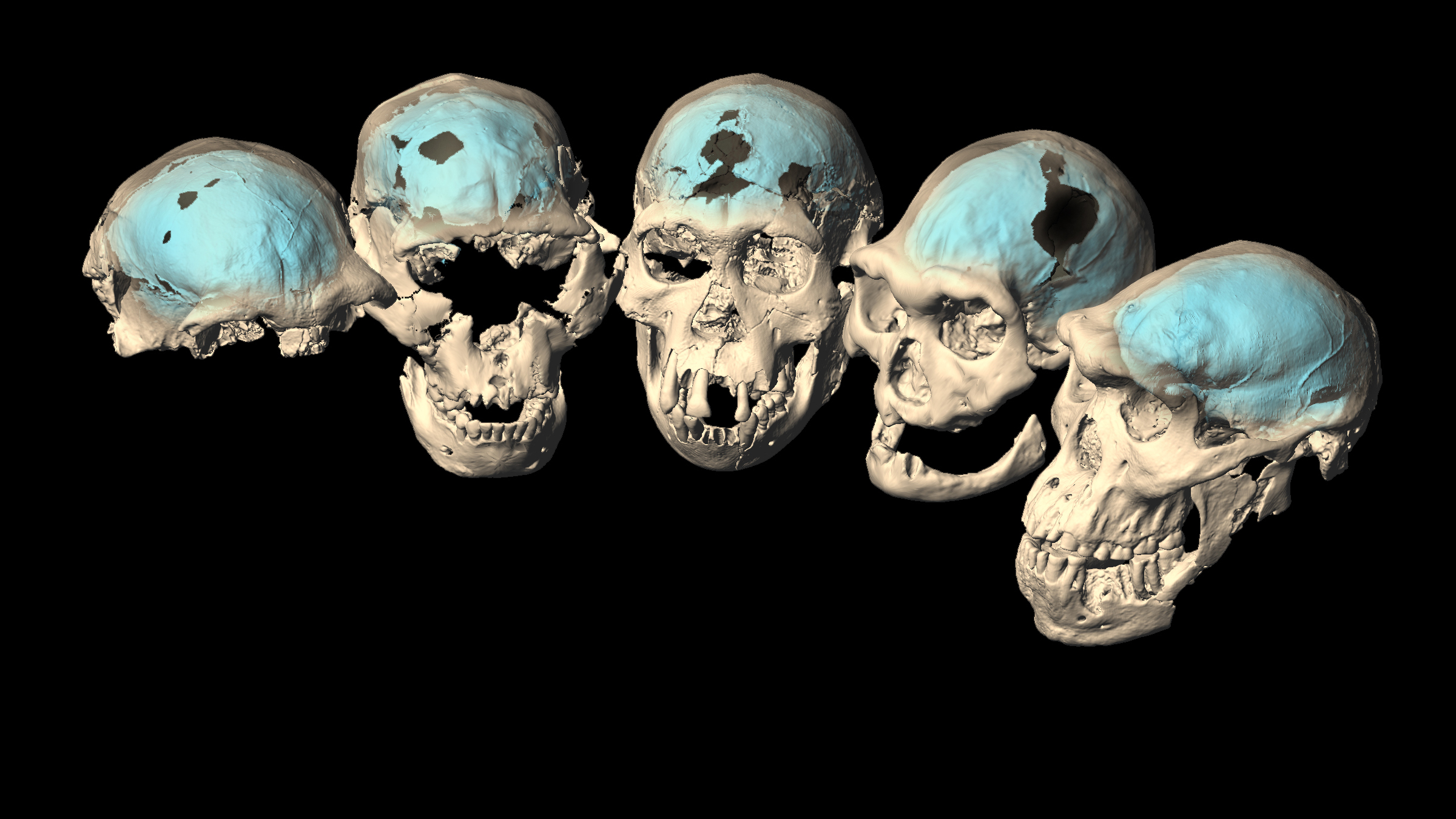
Early humans still had great ape-like brains, according to a new study that found modern humans evolved to have our "advanced" thinking organs relatively recently, between 1.7 million and 1.5 million years ago.
This means that the unique brain of modern humans (Homo) developed more than 1 million years after the Homo genus arose, and after the first Homo erectus migrated out of Africa, according to the study, published online Thursday (April 7) in the journal Science.
The finding overturns a previously held view that humans' frontal lobe — the part of the brain that processes complex cognitive tasks, including social thought, tool use and language — developed at the transition from Australopithecus to Homo, which happened roughly 2.8 million to 2.5 million years ago, the researchers said.
Related: 10 things we learned about our human ancestors in 2020
Because brains are made of soft tissues that don't fossilize, the researchers instead examined fossilized endocasts, or the skull region that housed the brain, to determine how the organ changed over time.
To do this, the scientists compared the structure of "primitive" or "early" brains with that of a modern human brain, looking at the endocasts of human's closest living relatives, the great apes, including 81 chimpanzees, 27 bonobos, 43 gorillas and 32 orangutans, along with the endocasts of 110 modern humans. Then, they analyzed the endocasts of nearly 40 ancient human skulls, including those from Australopithecus sediba, Homo erectus and Homo naledi, and determined how "primitive" or advanced their brains likely were by comparing them with the great ape and modern human endocasts.
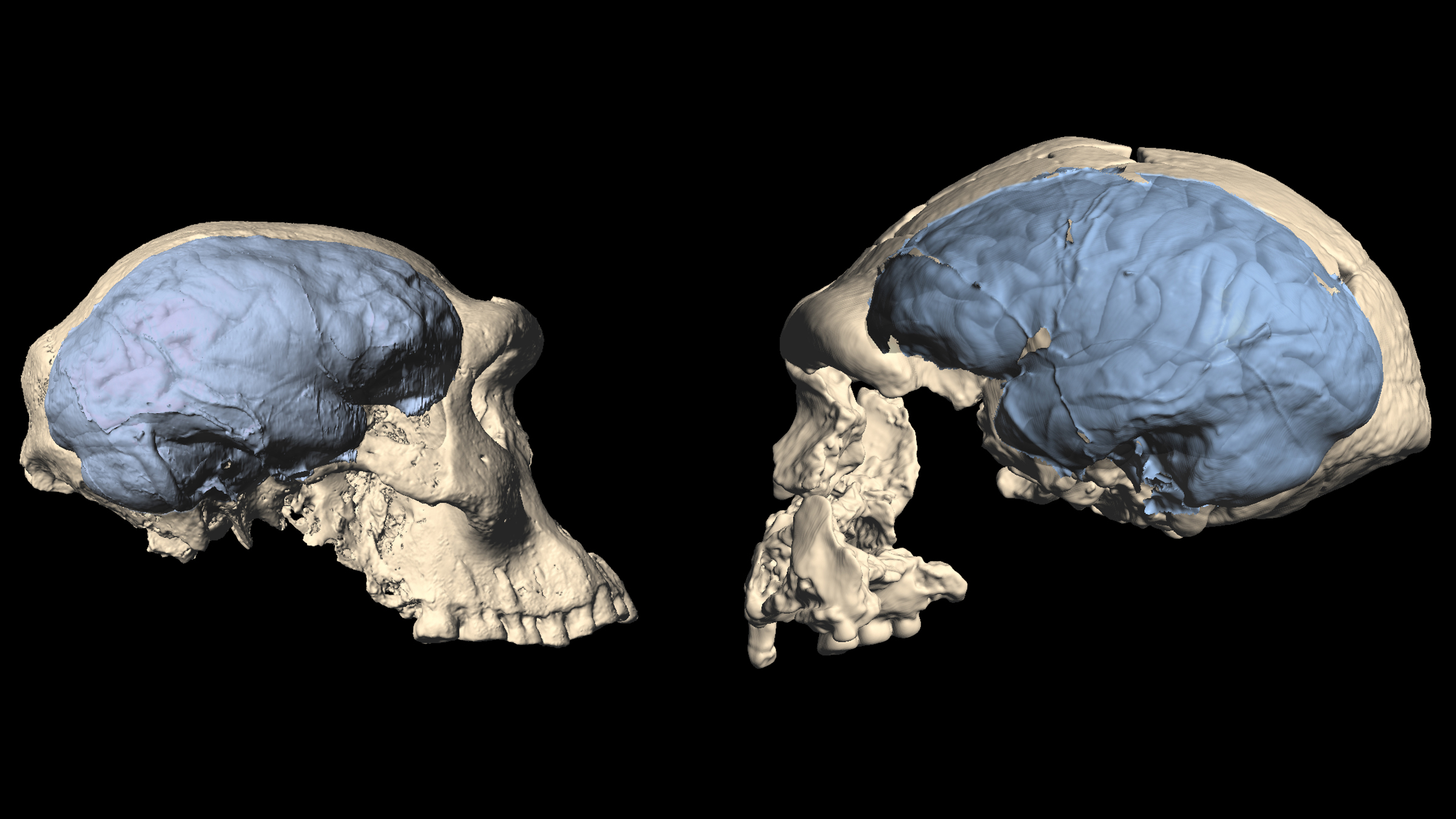
When the researchers conceived of this research project in the late 1990s, the task felt unattainable, because they didn't have any objective ways to interpret brain structure from endocasts, study co-lead researcher Marcia Ponce de León, a paleoanthropologist at the University of Zurich, told Live Science in an email. But then, advances in computed tomography (CT) and other imaging technologies allowed researchers to "quantify brain-endocast relationships in living species," she said. If it was possible to determine brain structures from the endocasts of living species, surely her team could infer brain structures in CT scans of fossilized skulls, she thought.
Get the world’s most fascinating discoveries delivered straight to your inbox.
The detailed endocasts revealed imprints of the long-gone brains' gyri and sulci, or folds and furrows, as well as the vascular structures surrounding the brain, the researchers found. Analyzing these imprints was laborious work. "That was a tough job, which needed a lot of 'gray matter' involvement," joked study co-lead researcher Christoph Zollikofer, a paleoanthropologist and neurobiologist at the University of Zurich.
As the team slowly made their way through the fossil endocasts, they saw evolutionary shifts unfold, such as one region inching farther toward the back of the brain over time. "For example, a backward shift of the precentral sulcus over evolutionary time reliably indicates that the Broca region in front of it became expanded during human evolution," Zollikofer said. "This region and its surroundings are especially interesting because, in modern humans, they are involved in speech production and other higher cognitive capabilities."
After comparing the fossil endocasts with those of the great apes and modern humans, the team's analyses revealed that the earliest members of Homo had a brain with a great ape-like frontal lobe.
"The earliest populations of our genus Homo had quite primitive ape-like brains, like their ancestors, the australopithecines," Ponce de León said. This includes fossils associated with Homo habilis and early Homo erectus, the researchers said.
Related: Photos: Earliest known human fossils discovered
When did Homo brains become 'modern'?
The earliest Homo remains on record, fossils from Ledi-Geraru in Ethiopia, date to 2.8 million years ago, but they don't have preserved braincases. For the following 1 million years after that, there aren't any preserved Homo endocasts, according to Amélie Beaudet, a paleoanthropologist at the University of Cambridge in the United Kingdom who was not involved in the study, but wrote an opinion piece about it in the journal Science.
This 1 million-year gap intensified the mystery of when Homo's advanced brain developed. But analyses of Homo erectus skulls helped unlock this finding, the researchers said. In particular, a group of five Homo erectus skulls known as the Dmanisi individuals, named for an archaeological site in Dmanisi, Georgia, was key; the roughly 1.8 million-year-old skulls were well-preserved and belonged to individuals who died between adolescence and old age.
"The Dmanisi fossils are of great importance, because they show us that, at around 1.8 million years ago, early Homo had a primitive brain, similar to that of Australopithecus and of great apes," Zollikofer told Live Science in an email.
But having an ape-like frontal lobe didn't stop Homo erectus from having an extraordinary existence. "These primitive-brained people were able to leave Africa, cope with the harsh climatic conditions of Eurasia, produce a variety of tools, be involved in meat procurement and provide support for elderly group members," Zollikofer said.
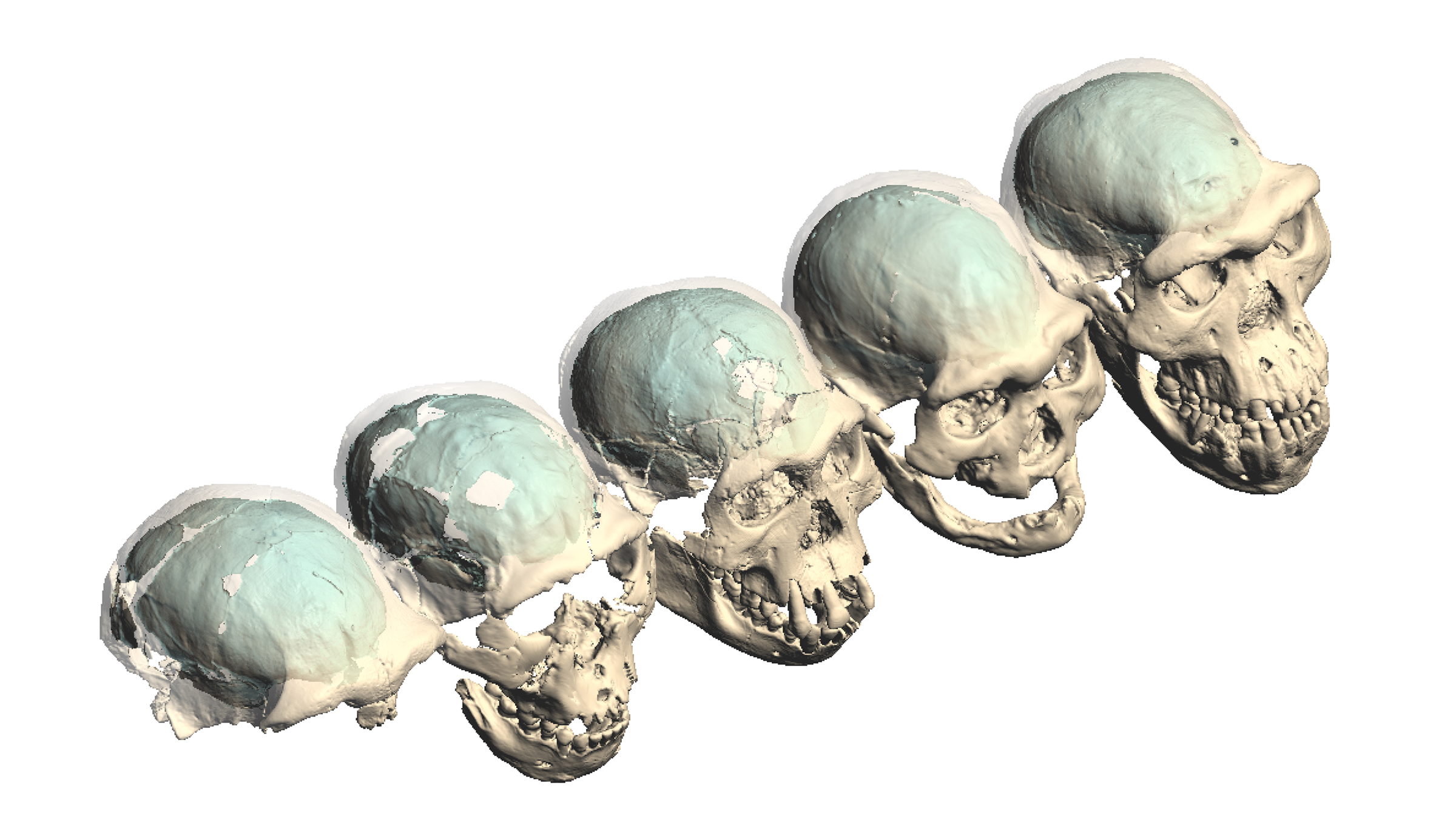

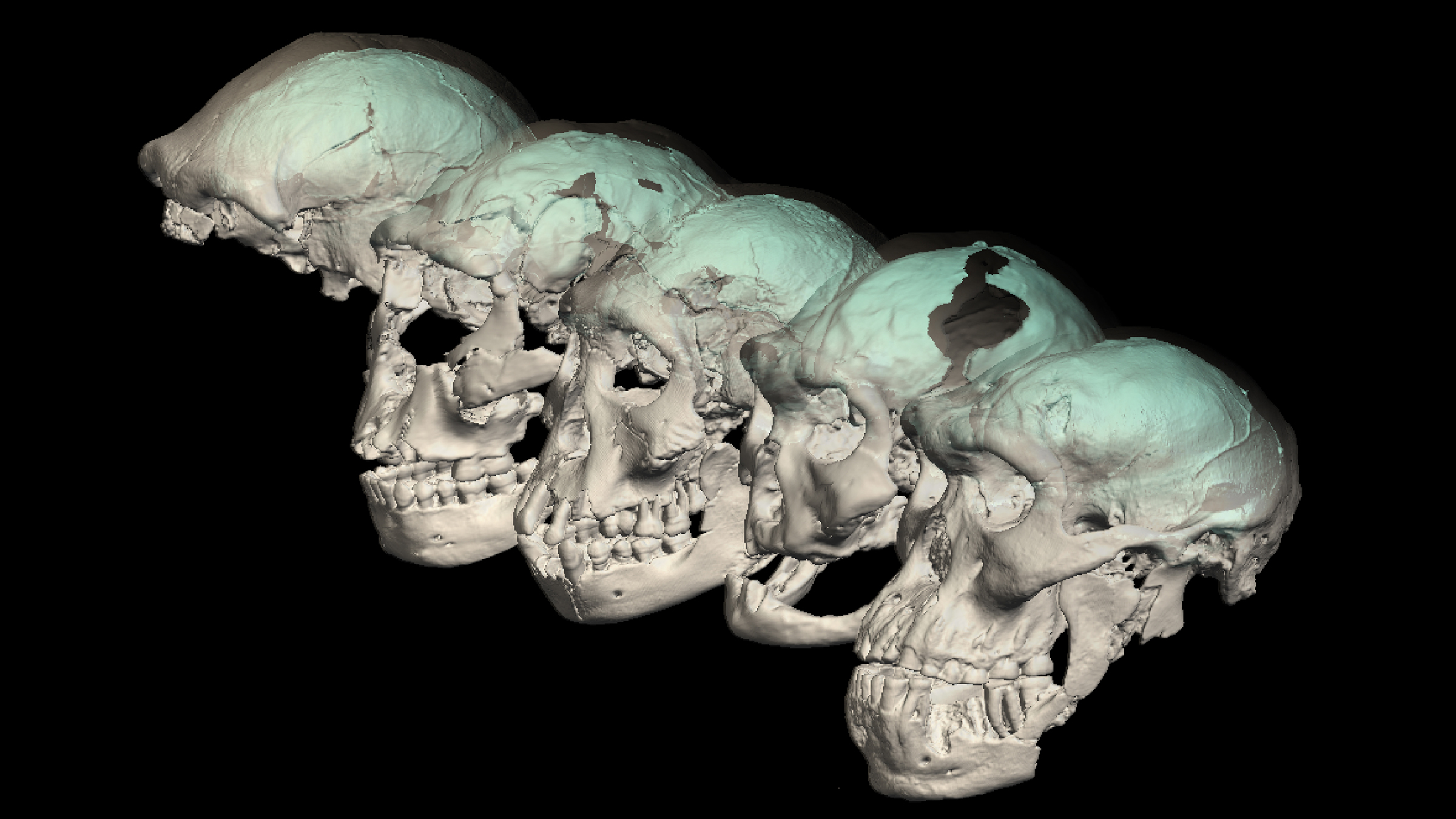
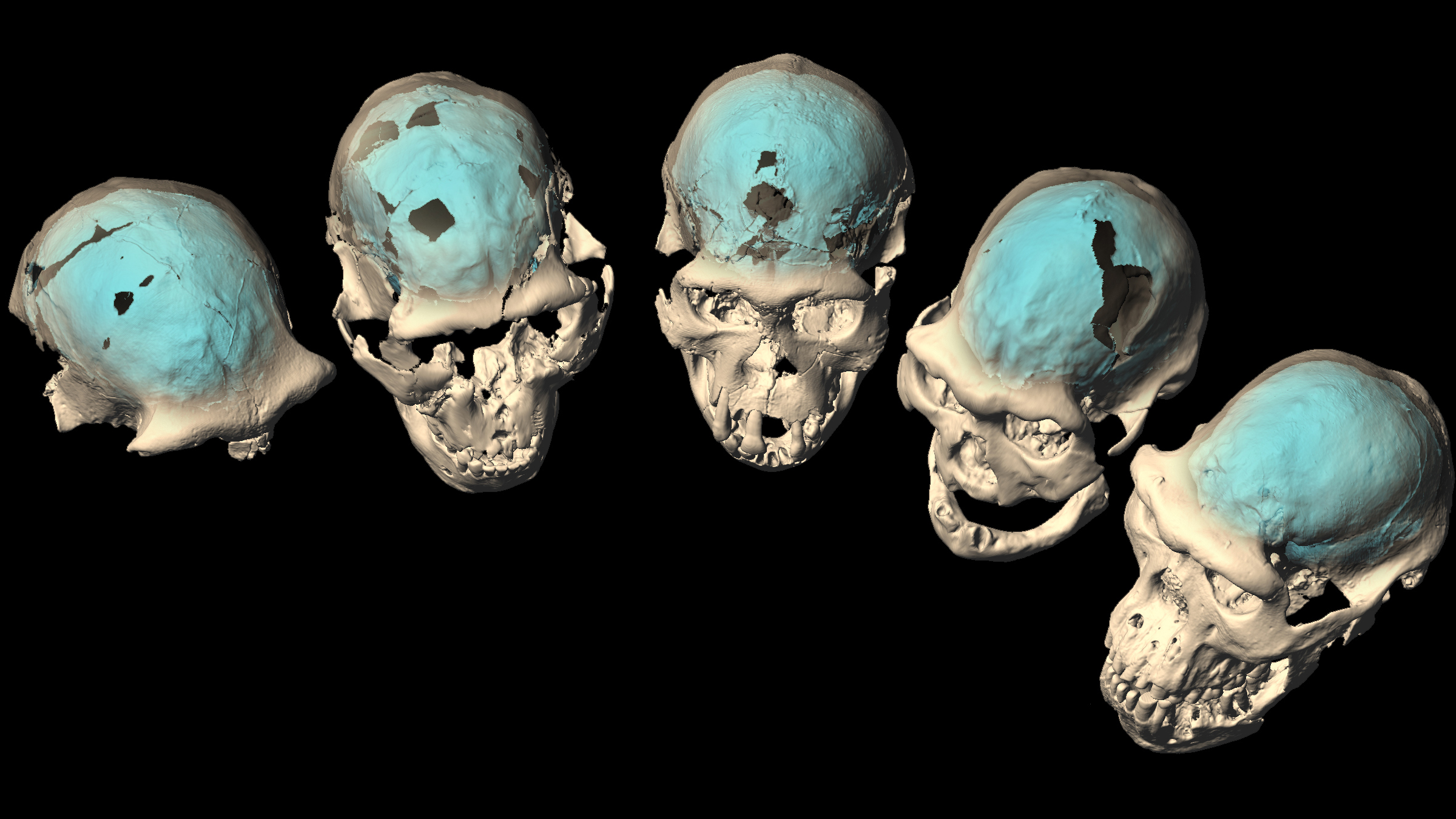

The Dmanisi individuals are thought to be among the early populations of Homo that left Africa. It wasn't until about 1.7 million years ago, in Africa, that Homo's complex frontal lobe likely began to form, according to the researchers, who found evidence of the reorganized brain region in Homo skulls from Africa and Southeast Asia that dated to 1.5 million years ago and younger. For instance, Homo erectus individuals who lived less than 1.5 million years ago, whose remains were found in Southeast Asia, had endocasts indicative of modern Homo frontal lobes, the researchers said.
This finding shows that a complex frontal lobe "once considered a hallmark of earliest Homo in Africa … evolved comparatively late," and was not necessary for early humans' dispersals out of Africa, the researchers wrote in the study.
This finding "is interesting and important, but ... not necessarily controversial," said Fred Spoor, a paleontologist at the Centre for Human Evolution Research at the Natural History Museum in London, who was not involved in the study.
"Focusing on a strong dichotomy between 'our' genus Homo and earlier ancestors (e.g. Australopithecus like 'Lucy' from Ethiopia) is a remnant from the days when there were fewer fossils available, and human evolution was seen as a simple linear process from various early ancestors to us modern humans," Spoor told Live Science in an email. "In that context, the origin of the genus Homo was seen as a biological revolution, associated with making stone tools and having a bigger, more complex brain."
Related: Image gallery: 3-year-old human ancestor 'Selam' revealed
Researchers have since learned "that stone tools were made as early as 3.3 million years ago (well before the expected origin of Homo) and species and specimens of the genus Homo with smaller brains have been discovered," Spoor said. "The reality is that various aspects that characterize us as modern humans emerged at different times, and not necessarily as a neat package at a 'special moment.'"
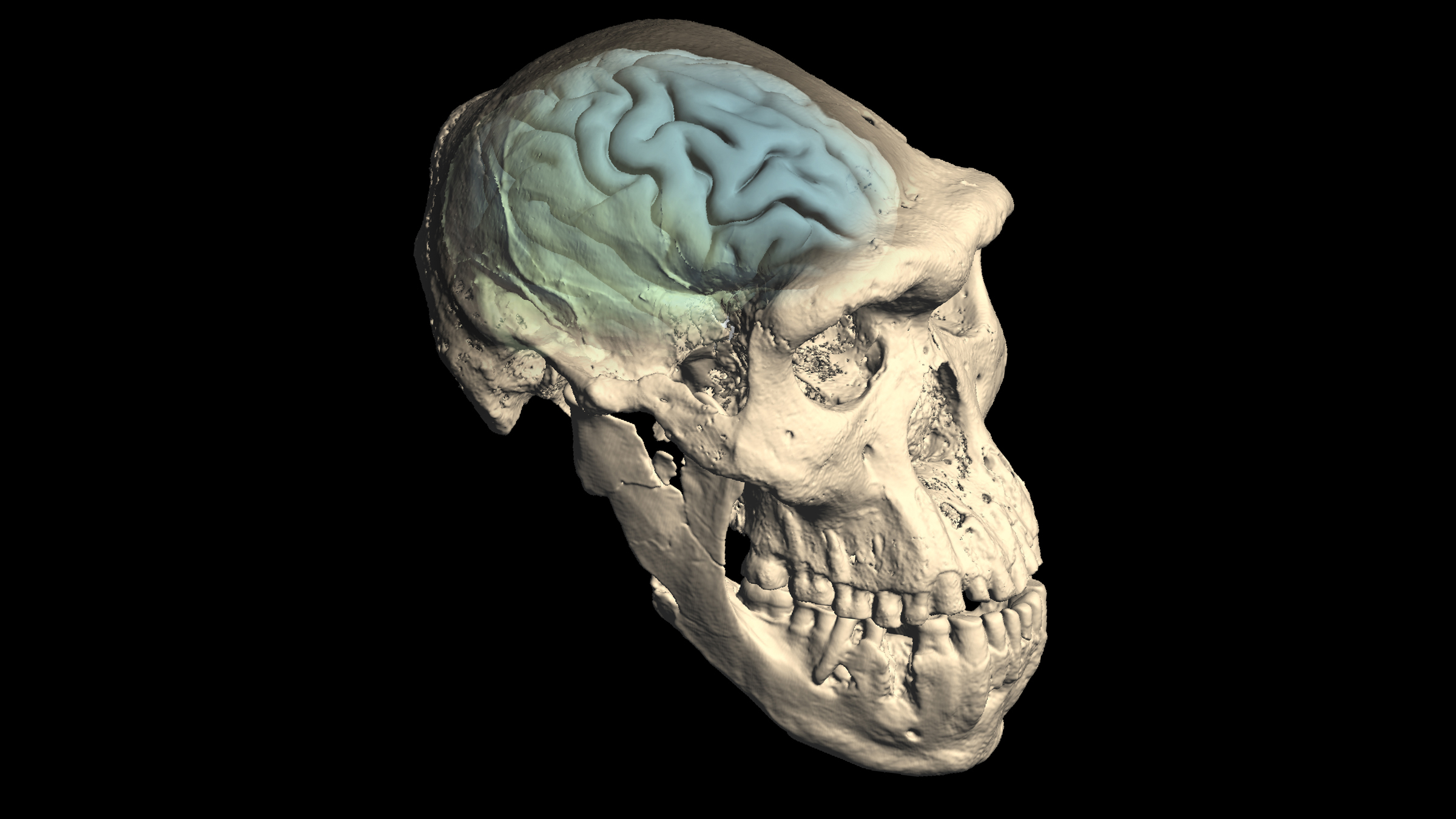
Why did Homo brains change?
It remains a mystery why Homo brains evolved to have a sophisticated frontal lobe, but scientists have a few ideas. Perhaps, it's an instance of the so-called "Baldwin effect," when an ability to learn a new behavior can drive changes to genetics and phenotype, or appearance, Zollikofer said. In this case, it's possible that brain structures responsible for language and other complex cognitive tasks grew in an environment that fostered and needed proto-language-like communication, he said.
"We hypothesize a positive feedback between cultural innovation and evolutionary brain reorganization," Zollikofer explained. That said, even if brain structures for early language were "in place" about 1.5 million years ago, "we do not know whether these early Homo populations had a modern human-like language," he said. Instead, early humans likely had "some kind of proto-language that — in the sense of brain-culture coevolution — favored the evolution of these brain structures, and these brain structures favored the evolution of proto-language."
Originally published on Live Science.

Laura is the managing editor at Live Science. She also runs the archaeology section and the Life's Little Mysteries series. Her work has appeared in The New York Times, Scholastic, Popular Science and Spectrum, a site on autism research. She has won multiple awards from the Society of Professional Journalists and the Washington Newspaper Publishers Association for her reporting at a weekly newspaper near Seattle. Laura holds a bachelor's degree in English literature and psychology from Washington University in St. Louis and a master's degree in science writing from NYU.


